Worlds Within Worlds: The First Heroic Fantasy (Part IV)
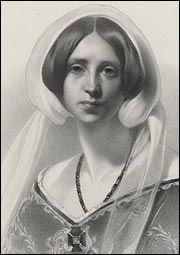 This is the fourth in a series of posts investigating the question of who wrote the first otherworld fantasy (you can find the first part here, the second here, and the third here). By ‘otherworld fantasy’ I mean a story set entirely in another world, with no framing device to connect it to reality. Traditionally, the credit for inventing otherworld fantasy has been given to William Morris. I have another figure in mind.
This is the fourth in a series of posts investigating the question of who wrote the first otherworld fantasy (you can find the first part here, the second here, and the third here). By ‘otherworld fantasy’ I mean a story set entirely in another world, with no framing device to connect it to reality. Traditionally, the credit for inventing otherworld fantasy has been given to William Morris. I have another figure in mind.
You can see her there on the right.
In 1837, Sara Coleridge, the daughter of poet Samuel Taylor Coleridge, published a book called Phantasmion, which was received, and reviewed, as a fairy tale novel. And, at first glance, it certainly seems similar to the German and French fairy tales that were popular at around that time. But I don’t think it reads like a fairy tale, certainly not once it gets going.
It reads very like a high fantasy. In fact, like an otherworld fantasy.
Phantasmion does not begin with any linkage to the world outside of its story. It starts when young Prince Phantasmion of Palmland meets a fairy godmother, who shows him various wonders. Like a fairy tale, then, but it moves swiftly onward: Phantasmion’s mother, Queen Zalia, dies, and then his father, King Dorimant, a year after. Regents take charge of the kingdom; when Phantasmion’s in his teens, his best friend dies. Depressed, Phantasmion encounters his fairy godmother again. She grants him wings, and he flies away to eavesdrop on a peculiar scene in which a woman, a queen, appears to be conspiring with a mermaid against another woman. He returns home, and has his godmother change his wings for fly-like suckers on his legs, so he can climb a mountain. In the course of doing this, he rescues a baby.
That’s the first four chapters of the book, and so far, so good. We’ve had some concrete geography; the mountain Phantasmion climbs is part of “the Black Mountains, which divided his territories from Rockland, the realm of a neighbouring monarch”. Add that to the names given to Phantasmion’s parents, and a certain awareness of politics (we’re told that Phantasmion’s regents plotted to keep him from the throne, and at the end of Chapter Four he talks with an old noble who used to be his mother’s guardian—but the noble’s ordered away before Phantasmion can learn much), and we have perhaps a slightly different tone than the typical fairy-tale.
It’s what comes next, though, that I believe to be effectively unprecedented. Chapter Five begins as follows:
The kingdom which Phantasmion had inherited from his ancestors abounded not only in palms, but in all kinds of grain and fruit trees, as well as in flocks and herds. The land flowed with milk and wine, oil and honey; but few metals or valuable stones had yet been discovered in its bosom. On the other hand the realm of Albinian, who reigned over a country separated from Palmland, partly by an extensive range of hills, called the Black Mountains, and partly by the river Mediana, which flowed from them to the sea on the right hand, was craggy and barren, rich only in metals, marbles, and other stones, and in materials for making glass and porcelain. The men of Rockland, (so this wild country was called,) were ingenious in mechanical devices and operations; the inhabitants of the fertile Land of Palms were given to agriculture, and had never acquired that skill in arts and manufactures, by which the neighbouring nation was distinguished. Anciently the two countries enriched and strengthened one another, but these friendly relations were exchanged for feuds and settled hostility during the reign of Dorimant. For that ambitious monarch cherished designs of rendering the Land of Rocks tributary to his kingdom, and, having been secretly informed of certain iron mines in a glen among the Black Mountains, he offered to yield his claim upon the hand of a fair lady whom Albinian had fallen desperately in love with, on condition that this narrow vale should be annexed to his crown. The King of Rockland unguardedly accepted these terms, but afterwards refused to ratify his part of the treaty, having learnt, as he declared, that Dorimant was covertly preparing to make war on his dominions. It was reported, however, that he had been influenced in this matter by the sorceress Queen of Tigridia, who foretold that a mighty conqueror should arise in a craggy vale among the Black Mountains, containing veins of iron. Dorimant inveighed heavily loudly against the bad faith of Albinian, which he secretly hoped he should soon be in a condition to punish; for, after deserting the lady to whom he had been betrothed, he espoused the heiress of Gemmaura, a district which lay between Palmland and the kingdom of Almaterra, fully expecting to find the desired metals in his new territory.
There’s a lot you can say against this paragraph, which actually goes on for a few sentences more. It’s long and expository, and the prose is probably difficult for modern readers to get their heads around. Personally, I quite enjoy the writing of the book for the most part (Sara Coleridge’s prose seems to me to compare well to her father’s), and in that sense I find this passage unfortunate.
But the prose is not really what matters. What matters is what that passage does. This is worldbuilding, and it is distinctively fantasy worldbuilding.
We get geography, a bit of history, some ethnography — and all with no connection whatsoever to the real world. The exposition establishes a past, a history between distinct places shaped by distinct personalities, and uses it to set up the adventures that take place in the present. It’s oddly like Tolkien in that the history seems to have “gone wrong” before the story began; Dorimant’s greed brings disruption, and the formerly idyllic state between the two kingdoms falls into strife.
And then there’s the Queen of Tigridia, who utters a prophecy. If this passage begins the tradition of fantasy worldbuilding, it’s notable that a prophecy’s right there at the beginning of things as well. It’s as if fantasy worlds aren’t just three-dimensional but four-dimensional, with a future as predetermined as the past (which, as a story, they certainly are — in the sense that every story has a predetermined end).
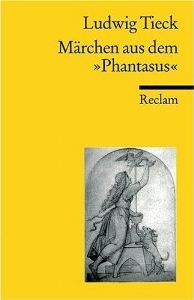 It would be wrong to say that this passage, or Phantasmion as a whole, came out of nowhere. As I noted last week, the Brontës were doing something similar at about the same time. Certainly E.T.A. Hoffmann’s fantasies get close to this level of detail, and Ludwig Tieck had a collection of fairy tales called Phantasus which perhaps suggested the title of Coleridge’s book. But so far as I can tell, none of these other writers dispensed with the world we know in the way that Coleridge does.
It would be wrong to say that this passage, or Phantasmion as a whole, came out of nowhere. As I noted last week, the Brontës were doing something similar at about the same time. Certainly E.T.A. Hoffmann’s fantasies get close to this level of detail, and Ludwig Tieck had a collection of fairy tales called Phantasus which perhaps suggested the title of Coleridge’s book. But so far as I can tell, none of these other writers dispensed with the world we know in the way that Coleridge does.
Instead, it is the daughter of the man who coined the phrase “suspension of disbelief” who created a story that requires a different kind of suspension of disbelief than any others up to that time.
Consider it in terms of the four characteristics of fantasy worlds I outlined in my first post. Coleridge created here a world with its own logic (for there is magic and prophecy), its own history, its own geography, and people with a culture based on the laws and limits of their world. Coleridge’s world is as much an independent fantasy world as something like Martin’s Westeros.
Is this significant, that William Morris was not the first person to set a story in an imagined world? I’m intrigued by the idea that Sara Coleridge invented fantasy worlds because I think this does something for the tradition of fantasy writing. I have no idea if George MacDonald read Phantasmion, or even knew of its existence. It wouldn’t surprise me either way, though, and if he did …
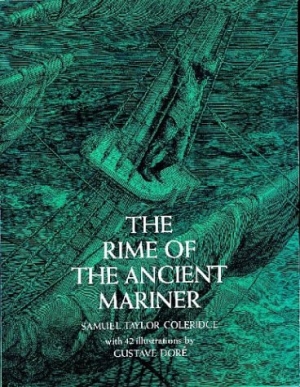 … then, since MacDonald is known to have influenced the fantasy tradition that came after him, we can say that Coleridge also stands in that tradition. And what is fascinating about that is that I think one can also argue that she stands at the end of another tradition, the tradition of Romantic fantasy writing. That would include the Gothic (and so she is like that other female survivor of a Romantic poet, Mary Shelley), and would link her directly to Hoffmann, Byron, and even to the weird poetry of Samuel Taylor Coleridge himself.
… then, since MacDonald is known to have influenced the fantasy tradition that came after him, we can say that Coleridge also stands in that tradition. And what is fascinating about that is that I think one can also argue that she stands at the end of another tradition, the tradition of Romantic fantasy writing. That would include the Gothic (and so she is like that other female survivor of a Romantic poet, Mary Shelley), and would link her directly to Hoffmann, Byron, and even to the weird poetry of Samuel Taylor Coleridge himself.
What I want to argue is that Phantasmion and its author extend the lineage of fantasy, back past the Victorian era, making a firm link from the MacDonalds and Morrises to the Romantics like Blake. Paradoxically, the groundbreaking fantasy of the fairy tale Phantasmion emphasises that fantasy does not grow out of the fairy tale, but rather that the fairy tale was only one phase of the development of fantasy.
It seems to me that the English fantasy tradition that produced Tolkien has very often been viewed as beginning with Morris or Macdonald, in the late or perhaps middle of the nineteenth century. This makes the ‘emergence’ of fantasy look like a response, and indeed a belated response, to the emergence and ascendance of the tradition of realist novels, from Austen to Dickens to Eliot and Hardy and on to D. H. Lawrence. If we link the fantasy tradition to Romanticism and the Gothic through Coleridge, though, maybe things look a little different.
Suddenly, fantasy looks like a parallel development, not a reaction. It looks like an extensive tradition of its own. Perhaps a tradition based on different criteria — the convincing construction of an imagined world, say, rather than the detailed description of the existing world — but a tradition nevertheless.
On the other hand, these musings about traditions should not, I feel, obscure the value of Phantasmion and of Coleridge’s writing. What is really remarkable here is that, as far as I can see for the first time in history, a writer presents a fantasy realm without mediating it by relation to the world of everyday experience. This story does not happen on islands somewhere between here and Troy; nor does it happen at the court of Haroun al-Raschid; nor did it happen in a dream; nor was it a story somebody else told that happened to be written down.
Here is fantasy that demands the status of any fictional reality. It is its own world. It is whole and self-contained. And it foreshadows what was to come in fantasy in some startling ways.
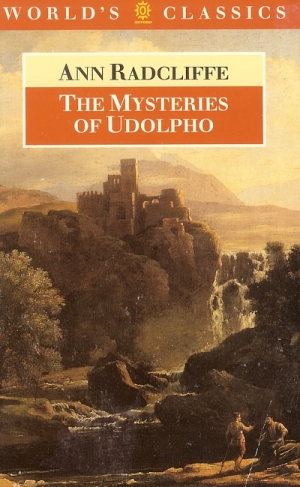 The book highlights similarities I never noticed between Tolkien (in particular) and Gothic novelists like Ann Radcliffe. Things like the elaborate descriptions of landscape. The use of poems and songs to play a role in the story. Perhaps most intriguingly, Phantasmion at one point sets out to seek a Deserted Palace, and finds a blasted land that calls Mordor to mind as much as it does the bleak landscape of a Gothic novel. Within the palace is a mad King — ultimately a figure of pity more than fear, but his initial description suggests both a Byronic villain and a Dark Lord.
The book highlights similarities I never noticed between Tolkien (in particular) and Gothic novelists like Ann Radcliffe. Things like the elaborate descriptions of landscape. The use of poems and songs to play a role in the story. Perhaps most intriguingly, Phantasmion at one point sets out to seek a Deserted Palace, and finds a blasted land that calls Mordor to mind as much as it does the bleak landscape of a Gothic novel. Within the palace is a mad King — ultimately a figure of pity more than fear, but his initial description suggests both a Byronic villain and a Dark Lord.
Even on a sentence level, the book seems to mix fantasy with the Gothic. At one point point a character tells us that: “All the country believes that Albinian was bewitched when he wedded the daughter of Malderyl, whom Glandreth brought a captive from Tigridia.” For me at least there’s an odd feeling of familiarity to that sentence; it’s the sort of thing I feel I’ve read it somewhere before, in some fantasy novel I can’t quite call to mind. But, intriguingly, if the texture of the language is Tolkienesque, the subject of marriage and romance is Gothic.
Then again, we also get things like: “‘I have heard,’ said the prince, ‘that Glandreth is plotting with Maudra to ascend the throne of Albinian at his decease, and moreover to unite Palmland with his dominions.’” Which sounds to me like good solid fantasy dialogue. The names are key here, of course. They’re odd-sounding names, and that’s significant. They’re not standard English or European names, such as you find in Morris. They don’t seem to belong to any particular real-world culture. They evoke other fantasies because, I think, they’re meant as the same sort of estrangement device: the same sort of marker, that lets readers know they’ve entered another world.
I would have to say, though, that the book is most like Tolkien where I would have least expected it. That is, it is most like Tolkien in terms of what is not in it.
For while marriage exists in this world, and heaven is mentioned, there are no priests, no churches, no references to the Bible, and no mention of the name of Christ. In fact, once, in a comic interlude where Phantasmion, gifted with wings again by his fairy godmother, is caught in a supernaturally strong spider’s web, “a set of rustics who beheld him … believed him to be some deity that presided over the feathered tribes, and gazed at his wings in silent wonder.” Note that ‘feathered tribes’ is here a poetic phrase for ‘birds’; still, the suggestion of a polytheistic world is the closest the book gets to any reference to any God at all.
One can go further: quite unlike the Gothic, there is no obvious quotation from Shakespeare or any other poet. The lands here seem to have their own culture. And their own technology — porcelain exists, but not apparently gunpowder (which is important, since the lack of metal armour in Palmland is a plot point). Note that Europeans did not work out how to make porcelain until the early eighteenth century, so the development of technology does not track with the real world.
The story of the book is less a quest narrative than a story about the love Phantasmion develops for a girl named Iarine, and his struggles with his rival Karadan — which slowly come to be overshadowed by the threat posed to him and his kingdom by the invader Glandreth. But you could also say that it’s a book in which the initially youthful protagonist grows more powerful through the course of the story, ending as a knight who leads a group of united armies in a conclusive final battle. That battle, however, is not determined by mere force of arms, but by unexpected magic. The resolution of the battle is Tolkien’s ‘eucatastrophe’, an unlooked-for positive twist that concludes a story with a happy ending. In fact, by the end of the book, even the places associated with evil have been destroyed, and Phantasmion is then married to Iarine, a kind of healing for the land that has recently seen so much conflict.
This is not to say that the book’s perfect. It’s very much in the Romance tradition; characters are flat, occasionally stupid for no good reason, and their internal life is minimal — but the scenes of enchantment are excellent, and the story moves quickly, although seeming repetitive. Interestingly, early events in the book prove to be the key to understanding much of the story, once their true meaning is revealed; the story turns out to have a more complex plot than we might have suspected.
Perhaps the book’s greatest weakness is the way it handles magic. The story is effectively dictated by fairies, with the humans carried along by the whims of magic sprites. If we assume that fairies are somehow incapable of volition of their own, or are literalised desires of mortals, then it becomes a bit easier to read — but I didn’t notice any explicit textual indication of this.
Was this book deliberately set in a fantasy world? I can’t think of another way to read it. The names, the geography, the technology, the lack of references to Christianity and European culture — I suppose it could be meant to be set in Africa, or in some other part of the world not known in Europe at the time, but I can see no particular reason to assume this, and the existence of fairies and magic would seem to suggest otherwise. In fact, the absence of any mention of Gods or religion at all would seem on its own to remove it from cultures in this world.
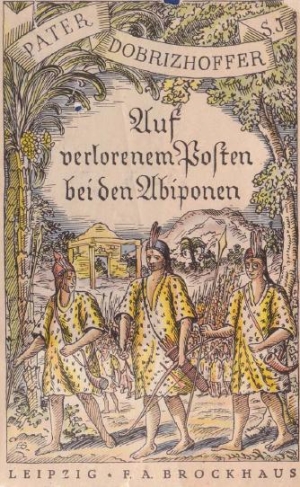 It seems to me not impossible that Sara Coleridge could write such a book. She was a highly intelligent woman, whose writings contain perceptive comments not only on her father’s poetry, but also on the work of his friend William Wordsworth. She was an excellent editor of her father’s writing. She spoke several different languages, and had previously published a translation from Latin of the memoirs of Martin Dobrizhoffer, a missionary to Paraguay.
It seems to me not impossible that Sara Coleridge could write such a book. She was a highly intelligent woman, whose writings contain perceptive comments not only on her father’s poetry, but also on the work of his friend William Wordsworth. She was an excellent editor of her father’s writing. She spoke several different languages, and had previously published a translation from Latin of the memoirs of Martin Dobrizhoffer, a missionary to Paraguay.
(The absence of religion in the world of Phantasmion may derive, in part, from this source. Samuel Taylor Coleridge, speaking of Dobrizhoffer’s memoirs, is quoted in Specimens of the Table Talk of S.T. Coleridge as saying that: “The confident belief entertained by the Abipones of immortality, in connection with the utter absence in their minds of the idea of a God, is very remarkable.” But I can’t find any other similarity between the Abipones and the societies of Phantasmion.)
It may be worth pointing out, as well, that Samuel Taylor Coleridge was a highly intellectual and learned poet. So was his friend, William Wordsworth, and his brother-in-law, the less-successful writer Robert Southey. Between them, Wordsworth and Southey largely raised Sara Coleridge, and it seems to me reasonable to assume that they would have brought her up in an environment that not only would have encouraged her intellectual growth, but also her awareness of writing and literary form.
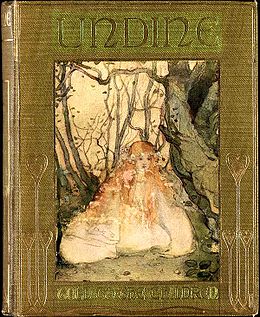 Given that, it’s possible to imagine her having an acquaintance not only with the major Romantic writings in English, but also with contemporary writing in France and Germany, which at the time included fantasy and fairy tales. One can also imagine her deciding to try an experiment, and craft a fairy tale which was complete in itself, and bore no necessary connection to the real world. But all this is purely speculation. (For what it’s worth, though, Samuel Taylor Coleridge is known to have greatly admired the German fairy tale of Undine, by the Baron de la Motte Fouqué. From Specimens of the Table Talk of S.T. Coleridge: “But Undine, he said, was one and single in projection, and had presented to his imagination, what Scott had never done, an absolutely new idea.”)
Given that, it’s possible to imagine her having an acquaintance not only with the major Romantic writings in English, but also with contemporary writing in France and Germany, which at the time included fantasy and fairy tales. One can also imagine her deciding to try an experiment, and craft a fairy tale which was complete in itself, and bore no necessary connection to the real world. But all this is purely speculation. (For what it’s worth, though, Samuel Taylor Coleridge is known to have greatly admired the German fairy tale of Undine, by the Baron de la Motte Fouqué. From Specimens of the Table Talk of S.T. Coleridge: “But Undine, he said, was one and single in projection, and had presented to his imagination, what Scott had never done, an absolutely new idea.”)
What I can say for certain is that Phantasmion ends by asserting its own reality: “Phantasmion looked round in momentary dread, lest Iarine should have proved a spirit and vanished like the rest; but there she stood, her face beaming bright as ever in full sunshine, the earnest that all he remembered and all he hoped for was not to fade like a dream.” This is, specifically, not a dream. This is not an imaginary story. This is something new, something important. If this book had been published in 1937, it would have been remarkable. For it to have been written in 1837 is incredible. I don’t know why this book is not better known, and I hope my talking about it here prompts some discussion and re-evaluation of this remarkable text.
You can read it through Scribd here, or through Google Books here.
Matthew David Surridge is the author of “The Word of Azrael,” from Black Gate 14. His blog is Hochelaga Depicta.
[…] name that writer, and make my case for the importance of the fantasy, here. Matthew David Surridge is the author of “The Word of Azrael,” from Black Gate 14. His blog is […]
Really excellent series of posts. I was never convinced by Lin Carter saying William Morris wrote the first truly Secondary World fantasies, but I thought the actual answer would lie later (Dunsany) rather than earlier. Never thought it would be that much earlier…
[…] I wrote about the development of heroic fantasy, and identified Sara Coleridge as the first heroic fantasy writer, I mentioned that to me part of the importance of this […]
[…] earliest fantasy novel in English”) as the book that got the ball rolling, which, incidentally, is the same book that Black Gate’s own Matthew David Surridge also identifies as the first heroic fantasy (methinks they’re on to something here). Phantasmion […]
Some truly bad-ass scholarship. Groundbreaking, in fact.